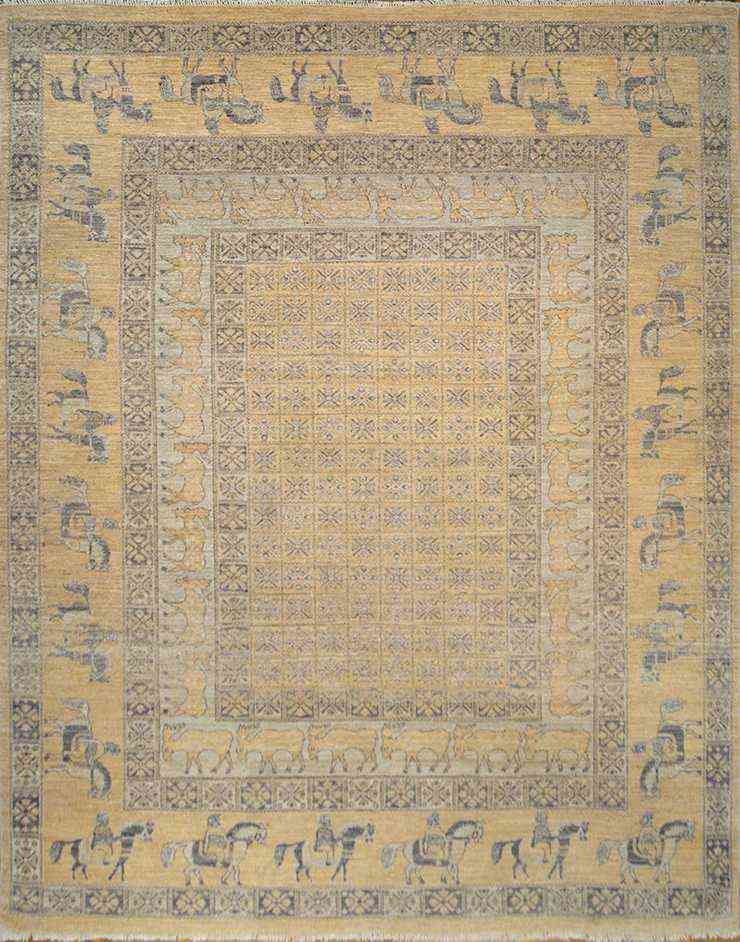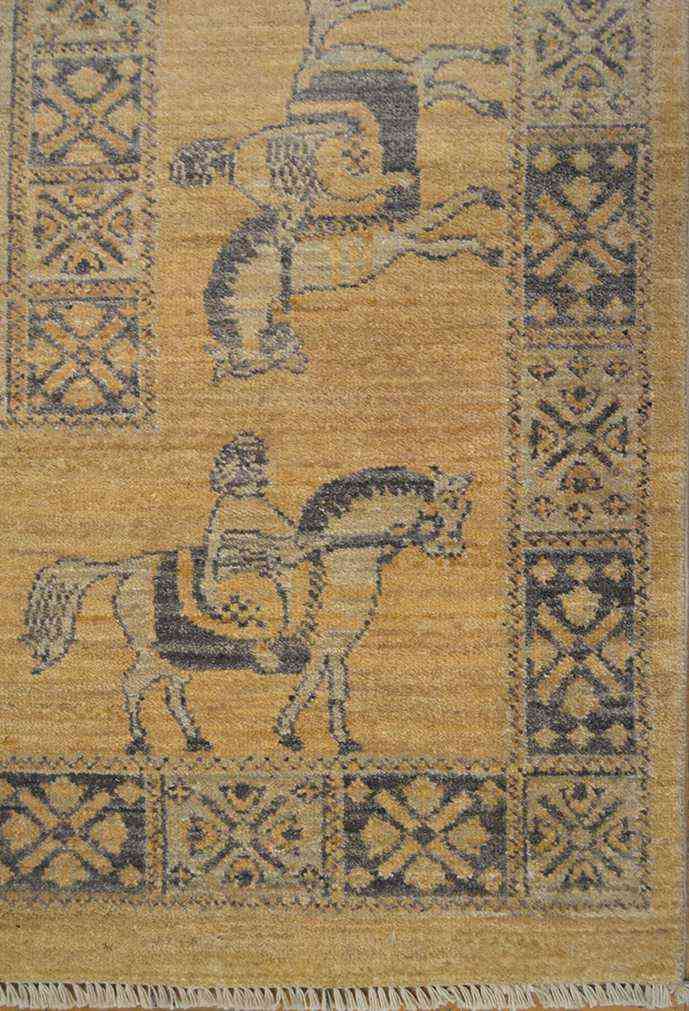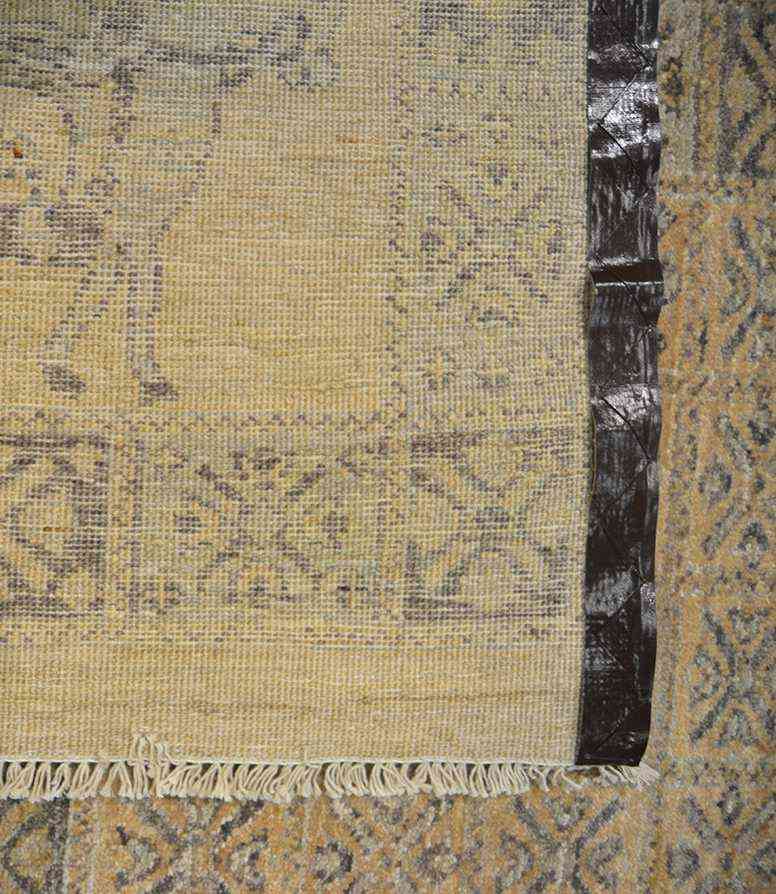Pazyryk 9' 11" x 7' 11"
Couldn't load pickup availability
CUSTOM SIZES AVAILABLE BY SPECIAL ORDER
PLEASE CONTACT US FOR AVAILABILITY
Sizes are approximate. Photos are not necessarily exact for color.
New rugs are of the highest quality and are handpicked overseas by the Bashir Family.








Overview
This fine pure wool Pazyryk carpet has a rich and varied decor. It's design is inspired from the carpet that is claimed by historians to be the oldest rug in the world: the Pazyrik rug. The carpet was found and excavated in 1949 by russian archeologist: Sergei Rudenko. The symbols within this carpet speak to a connection with the metaphysical, celestial and animal kingdoms.
A Brief History of the Pazyryk Design
This carpet's design is inspired from the carpet that is claimed by historians to be the oldest rug in the world: the Pazyryk rug. The carpet was found and excavated in 1949 by Russian archaeologist: Sergei Rudenko. He found it preserved in ice in the Pazyryk Valley of Siberia while excavating the tomb of a Scythian prince. The burial mound was over 2500 years old and a ground breaking discovery in the history of carpet weaving.
The carpet features lots of interesting details such as men riding horses along its widest border. The central field is occupied by 24 cross-shaped figures, each of which consists of four stylized lotus buds. This composition is framed by a border of griffins, followed by a border of twenty-four fallow deer.
According to various textile experts the carpet is of Armenian origin while others dispute it to be of Persian origin. Both nations have traditions of carpet weaving spanning thousands of years. For example, the horses represented on the ancient carpet are nearly identical to horsemen on a frieze in the ancient Persian city of Persepolis. The possibility that the rug was produced by the Pazyryks is slim, because the sophistication and elegance of the design is indicative of a settled and cosmopolitan civilization unlike the nomadic Pazyryks.
The exact origin therefore remains unknown but what is known is that such a piece is a testimony to the fact that the fine art of carpet weaving had been going on for many centuries prior to having reached the level of expertise the Pazyryk carpet displays. At the moment, the original Pazyryk carpet is housed at the St. Petersburg Hermitage Museum. The carpet featured above is a replica made by our team of designers overseas to later be offered to a lucky person in North America.
Sources and inspiration: Bérinstain, Valérie, et al. L'art du tapis dans le monde (The art of carpets in the world). Paris: Mengès, 1996. Print.; Jerrehian Jr., Aram K.A. Oriental Rug Primer. Philadelphia: Running Press, 1980. Print.; Herbert, Janice Summers. Oriental Rugs, New York: Macmillan, 1982. Print.; Hackmack, Adolf. Chinese Carpets and Rugs, Rutland and Tokyo: Tuttle, 1980. Print. ; De Moubray, Amicia, and David Black. Carpets for the home, London: Laurence King Publishing, 1999. Print.; Jacobsen, Charles. Oriental Rugs A Complete Guide, Rutland and Tokyo: Tuttle, 1962. Print.; Bashir, S. (n.d.). Personal interview.; Web site sources and dates of consultation vary (to be confirmed). Without prejudice to official usage.



 Runner Rugs
Runner Rugs 2x3 Area Rugs
2x3 Area Rugs 3x5 Area Rugs
3x5 Area Rugs 4x6 Area Rugs
4x6 Area Rugs 5x7 Area Rugs
5x7 Area Rugs 6x9 Area Rugs
6x9 Area Rugs 8x10 Area Rugs
8x10 Area Rugs 9x12 Area Rugs
9x12 Area Rugs 10x14 Area Rugs
10x14 Area Rugs Round Rugs
Round Rugs Bath Mats
Bath Mats Doormats
Doormats 12x15 Area Rugs
12x15 Area Rugs








